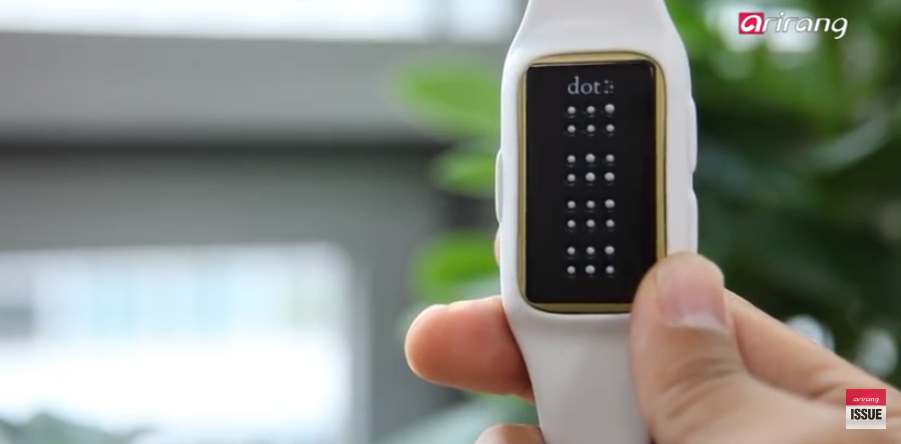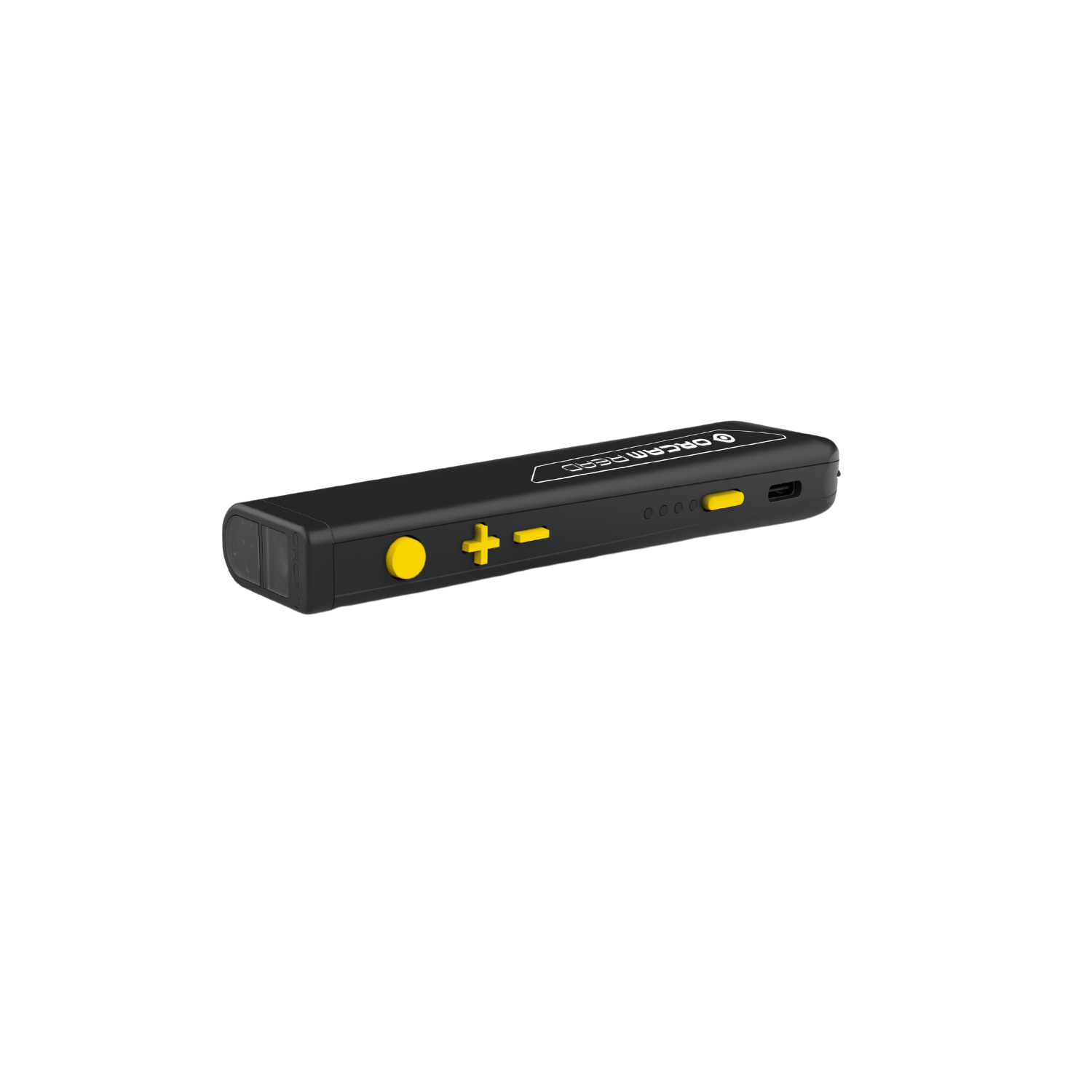Smart Glasses for the Visually Impaired: Breakthroughs in Vision Support
Smart Glasses for the Visually Impaired: Breakthroughs in Vision Support
Blog Article
Discover Cutting-edge Tools Made for the Visually Impaired
The growth of ingenious devices for the visually damaged represents a considerable development in ease of access and freedom. Technologies such as wise glasses with AI abilities and mobile applications designed to provide auditory summaries are improving daily experiences for customers. In addition, wearable tools that use haptic comments boost environmental awareness, while contemporary Braille developments use new means to involve with message. As these tools remain to progress, their influence on the lives of those with visual problems elevates crucial questions about the future of inclusivity and autonomy in numerous aspects of life. What exists ahead in this technical landscape?
Smart Glasses for Navigating

Smart glasses made for navigation are changing the method aesthetically impaired individuals interact with their atmosphere. These advanced devices use a combination of electronic camera technology, expert system, and acoustic responses to give real-time info regarding environments. By utilizing barrier detection systems, smart glasses can signal users to potential threats, making it possible for safer flexibility in both familiar and strange settings.
The combination of GPS technology better boosts navigating abilities, permitting customers to receive auditory directions as they move. This hands-free strategy not only fosters self-reliance however additionally empowers aesthetically damaged people to browse urban landscapes with boosted confidence. In addition, lots of wise glasses are equipped with attributes that identify spots and road indicators, giving contextual information that boosts the customer experience.
Moreover, the growth of these gadgets is continually advancing, with business working to improve the accuracy of object acknowledgment and increase the variety of navigational functions. As clever glasses come to be a lot more economical and accessible, they hold the potential to considerably transform daily life for visually damaged individuals. Eventually, these cutting-edge devices stand for an essential step towards inclusivity, offering improved wheelchair and a greater sense of autonomy for individuals browsing the globe around them.

Mobile Apps for Daily Living
Exactly how can mobile applications boost the everyday lives of visually damaged individuals? Mobile apps are reinventing the means visually impaired individuals browse their settings, handle day-to-day tasks, and gain access to information. These applications supply essential support with different capabilities, fostering self-reliance and boosting lifestyle.
Several ingenious mobile apps are created particularly for everyday living. For circumstances, applications like Be My Eyes attach aesthetically damaged customers with sighted volunteers through video phone calls, enabling them to get real-time help with jobs such as checking out tags or browsing unknown areas. In A Similar Way, Seeing AI, developed by Microsoft, uses fabricated intelligence to describe surroundings, checked out text, and identify objects, efficiently changing a smart device into a powerful device for everyday support.
In addition, navigating applications tailored for the aesthetically impaired, such as Aira and BlindSquare, provide audio-based directions and ecological information, making it possible for individuals to traverse their surroundings securely and with confidence. Beyond navigating and prompt support, mobile apps also sustain organization and job administration, with features that help individuals set pointers, produce order of business, and track visits. In summary, mobile applications work as vital resources, encouraging aesthetically impaired people to lead more independent and fulfilling lives.
Wearable Technologies for Support
Empowerment with technology is progressively evident in the realm of wearable gadgets designed to assist visually damaged people. These innovative tools incorporate seamlessly right into day-to-day live, improving navigating and offering vital comments to customers. Smart glasses geared up with cameras can check out and acknowledge faces message out loud, allowing customers to connect more confidently in professional and social settings.
An additional significant innovation is making use of haptic feedback systems in wearable devices. These systems use resonances or other tactile signals to convey information regarding the user's atmosphere, such as challenges or changes in surface, boosting mobility and safety. Wearable modern technologies also include wristbands that link to mobile phones, informing customers to notices with subtle vibrations, hence improving connection without dependence on visual cues.
As these this page technologies remain to advance, they are not just enhancing independence for aesthetically impaired individuals but likewise promoting a greater sense of incorporation in culture. By connecting the gap between challenges encountered in daily living and the capacity for autonomy, wearable technologies work as critical tools in the mission for equal rights and empowerment for those with aesthetic disabilities.
Sound Description Devices
Sound summary tools play a vital function in boosting access for aesthetically impaired people, offering them with the capacity to involve with visual media. OCR devices for the blind. These tools offer narrated summaries of key aesthetic elements in films, television programs, and live efficiencies, ensuring that users can completely understand the context and feelings shared through visuals
Audio description can be incorporated into numerous systems, including streaming services, movie theater testings, and live theater. Lots of preferred streaming services currently consist of audio description as an accessibility attribute, allowing audiences to pick it easily. In enhancement to conventional media, specialized apps also exist, offering audio summaries for art Your Domain Name events, galleries, and various other cultural events.
The effectiveness of audio summary pivots on the ability of the narrators, who need to share visual information succinctly without taking away from the original audio. Developments in this area are likewise leading the way for even more personalized experiences, where customers can readjust the degree of information and pacing according to their preferences.
Braille Innovations and Instruments
Braille tools and technologies have actually significantly transformed the method visually impaired individuals engage with text and details. Modern developments have actually resulted in the advancement of functional devices that boost literacy and independence amongst users. Especially, Braille show technologies have actually progressed, enabling dynamic analysis experiences. These gadgets transform digital text right into Braille, enabling customers to access a vast selection of information on computers, tablet computers, and smartphones.
Moreover, mobile Braille notetakers incorporate standard Braille input with modern-day capabilities, helping with note-taking, organizing, and document editing on the move. AI-powered visual aids. These compact devices commonly feature text-to-speech capabilities, bridging the void between Braille and auditory details
Additionally, ingenious Braille printers have arised, enabling individuals to generate Braille labels, papers, and educational products efficiently. This access fosters better participation in specialist and academic environments, ultimately advertising inclusivity.
Additionally, study into wise Braille modern technologies proceeds to increase. Devices that incorporate synthetic knowledge are being explored to supply real-time navigation aid and contextual details, improving the customer experience in diverse setups. On the whole, these developments mirror a commitment to equipping aesthetically impaired people via technology, guaranteeing they can conveniently gain access to and engage with the globe around them.

Verdict
The improvement of innovative devices for the visually damaged significantly boosts independence and high More about the author quality of life. These modern technologies not only foster better inclusion but additionally promote freedom in daily tasks, inevitably contributing to a much more fair and obtainable society for aesthetically damaged people.
As smart glasses end up being extra easily accessible and budget-friendly, they hold the potential to considerably change day-to-day life for visually damaged customers. Mobile applications are revolutionizing the method aesthetically impaired customers browse their settings, take care of everyday jobs, and accessibility information. Apps like Be My Eyes attach aesthetically damaged users with sighted volunteers through video calls, allowing them to get real-time assistance with tasks such as checking out labels or navigating unfamiliar spaces.Additionally, navigation applications customized for the aesthetically impaired, such as Aira and BlindSquare, use audio-based directions and environmental details, enabling customers to traverse their environments securely and confidently.The development of innovative tools for the aesthetically damaged dramatically boosts freedom and quality of life.
Report this page